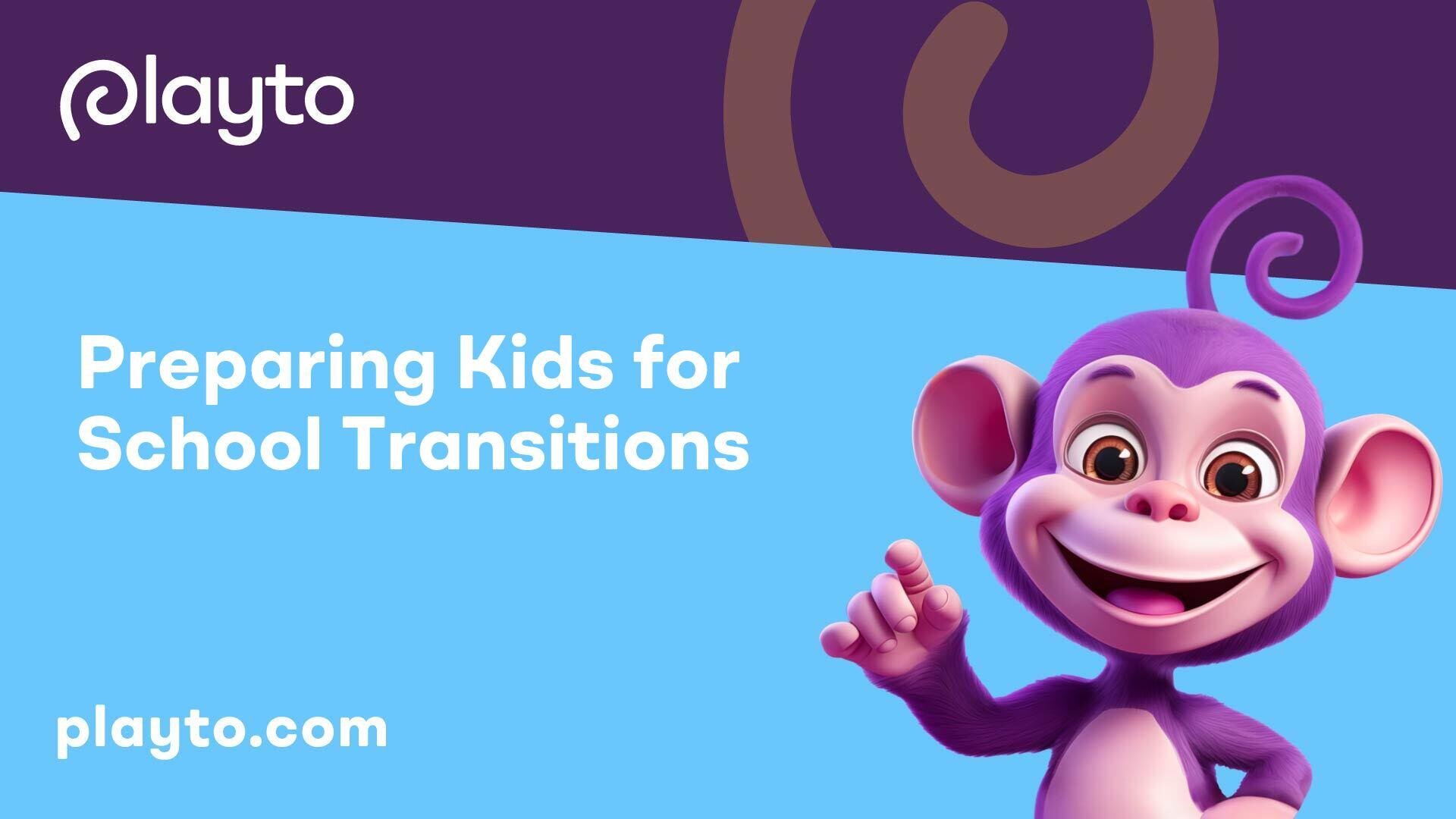
School Transition Strategies
When preparing kids for school transitions, families play a crucial role in supporting and guiding their children through the process. Implementing effective strategies can help ease the transition and ensure a positive experience. Let's explore practical tips for families, tools for gathering information, and online resources that can aid in the transition phase.
Practical Tips for Families
"Transitioning to Kindergarten" offers a wealth of practical tips families can utilize to prepare both their child and themselves for the kindergarten journey. Before, during, and after their child starts kindergarten, families can benefit from guidance on various aspects of the transition process.
Transition PhaseTips
- Before Kindergarten: Visit the school, establish routines, read books about starting school.
- During Kindergarten: Communicate with teachers, encourage independence, be supportive.
- After Kindergarten: Maintain open communication with the school, address any concerns promptly.
Additionally, the Illinois Early Learning Project offers informative tip sheets for parents entering their children into kindergarten. These sheets address common queries such as expectations from teachers and how to best ready your child for this transition phase.
Tool for Gathering Information
The "Introducing Me!" Family Connection Booklet serves as a valuable tool for teachers to gather essential information from parents regarding their child's entry into kindergarten. This booklet includes sections dedicated to the child's preferences, parents' names, and the child's likes and dislikes. The availability of this resource in both English and Spanish enhances accessibility and inclusivity in the transition process.
Information Section Details to Gather
- Child's Favorites: Favorite toy, activities, colors.
- Parents' Names: Contact information, emergency contacts.
- Preferences: Likes, dislikes, comfort items.
Online Resources for Transitioning
"Ready Freddy: Pathways to Kindergarten Success" is an invaluable online resource offering a range of free materials for families and practitioners embarking on the kindergarten journey. Featuring interactive online books for children and engaging learning activity calendars, this resource provides a wealth of guidance and support. Families can benefit from transition team-building tips and ideas on engaging parents and schools in the transition planning process.
Navigating school transitions can be a rewarding experience with the right support and resources in place. By implementing practical tips, leveraging effective tools, and utilizing online resources, families can ensure a smooth and successful transition for their children.

Support for Sensory Processing Challenges
When preparing kids for school transitions, it's essential to address sensory processing challenges that some children may face during these changes. By implementing effective strategies and utilizing tools that cater to sensory needs, the transition experience can be smoother and more manageable. Let's explore some key approaches to support children with sensory processing challenges.
Strategies for Regulation
Implementing strategies for regulation is vital in helping children navigate transitions successfully. Techniques such as deep breathing exercises, storytelling to create a familiar narrative, and simple arm movements can aid in regulating emotions and behaviors during times of change. These practices can help children feel more grounded and prepared for the transition process.
Benefits of Weighted Fidgets
Weighted fidgets, such as beanbags or putty, provide sensory input that aids in calming children and promoting a sense of security. These tools help children understand where their body is in space, which is essential for self-regulation. By using weighted fidgets, children can feel more at ease and focused, leading to increased comfort during transitions [2].
Music Therapy for Transitions
Music therapy is another effective method for supporting children during transitions. Low-frequency music, including drums, flute, guitar, cello, and rain instruments, can play a significant role in regulating emotions and attention levels. Music with specific beats per minute can help children engage in tasks and return their bodies to a natural rhythm, assisting in managing transitions effectively.
Incorporating these sensory-friendly strategies and tools into the school transition process can create a supportive environment for children with sensory processing challenges. By understanding their needs and providing appropriate support, educators and parents can help children navigate transitions with confidence and ease.

Psychological Impact of School Transitions
When children go through school transitions, it can have profound effects on their emotional well-being, academic performance, and peer relationships. Understanding these aspects is crucial in supporting children through these significant changes.
Emotional Adjustment Challenges
School transitions, especially in early childhood, can pose emotional challenges for children. Research indicates that frequent school changes during elementary school years can lead to increased stress, lower academic achievement, and difficulties in forming lasting peer relationships. Children may experience feelings of anxiety, uncertainty, and insecurity as they navigate unfamiliar environments and adjust to new routines.
To help children cope with emotional adjustment challenges during school transitions, it's essential to provide them with a supportive and reassuring environment. Encouraging open communication, validating their feelings, and offering reassurance can help ease their emotional transition and promote resilience.
Academic Performance Effects
The transition to a new school can have a significant impact on academic performance. Studies have shown that a considerable proportion of students may struggle to meet expected progress following school transitions. In the UK, around two in five students fail to achieve their expected progress in subjects like English, reading, and math after transitioning to secondary education.
Moreover, research indicates that the transition to secondary education can lead to a decline in student grades and academic achievement. Students who move from primary to secondary school often experience a drop in their grade point averages (GPA) and may face challenges in adapting to the new academic environment. Providing academic support, personalized assistance, and monitoring progress closely are crucial in helping students navigate academic challenges during school transitions.
Importance of Peer Relationships
Peer relationships play a vital role in a child's social and emotional development. The transition to a new school can disrupt existing social networks and friendships, leading to feelings of loneliness, isolation, and a sense of not belonging. Children may find it challenging to form new connections, establish friendships, and integrate into social groups within the new school environment.
Supporting children in fostering new peer relationships and building social connections is essential in mitigating the negative effects of school transitions. Encouraging social interactions, facilitating group activities, and creating opportunities for collaborative learning can help children feel more connected, confident, and included in their new school community.
Understanding the psychological impact of school transitions on children's emotional well-being, academic performance, and peer relationships is fundamental in providing adequate support, guidance, and resources to help them navigate this significant life change successfully. By addressing these challenges proactively and sensitively, parents and educators can help children adapt and thrive during school transitions.
Coping Strategies for Social Changes
When children go through school transitions, they may encounter significant challenges in adapting to new social environments. Coping with social changes is a vital aspect of supporting their emotional well-being and overall adjustment. In this section, we will explore coping strategies that can help children navigate disruptions to their social networks, overcome challenges in forming new friendships, and address feelings of loneliness.
Disruption to Social Networks
One of the primary challenges children face during school transitions is the disruption to their social networks. Moving to a new school often means leaving behind established friendships, which can be a significant source of distress. Friendships play a crucial role in a child's social and emotional development. The loss of familiar social connections can lead to feelings of loneliness, isolation, and a sense of not belonging.
To cope with the disruption to their social networks, children need support and encouragement to build new relationships and connections in their new school environment. Encouraging them to participate in school activities, clubs, or sports can help them meet new peers and establish meaningful friendships.
Challenges in Forming Friendships
Challenges in forming new friendships can arise due to the fear of rejection, social anxiety, or simply feeling overwhelmed in a new social setting. Children may hesitate to initiate interactions with their peers, leading to feelings of social isolation. It's essential to provide children with guidance and support to navigate these initial hurdles and build positive social connections in their new school environment.
Parents and educators can assist children by organizing social events, playdates, or group activities that encourage interaction and collaboration among students. By creating opportunities for social engagement, children can gradually overcome their reservations and develop confidence in forming new friendships.
Addressing Feelings of Loneliness
Feelings of loneliness are common during school transitions, especially when children miss their familiar social circles and struggle to establish new connections. Loneliness can impact a child's self-esteem, emotional well-being, and overall school experience. It's crucial to address these feelings proactively and provide children with the necessary support to cope with loneliness.
Engaging children in open and honest conversations about their emotions can help them express their feelings of loneliness and isolation. Encouraging them to participate in extracurricular activities, volunteer work, or peer support groups can also create opportunities for social interaction and help them feel more connected to their peers.
By acknowledging and validating children's feelings of loneliness, providing them with emotional support, and facilitating opportunities for social engagement, parents and educators can empower children to navigate the challenges of forming new friendships and establishing a sense of belonging in their new school environment.
Academic Adjustments during Transitions
When children undergo school transitions, they are often faced with significant adjustments in their academic environment. These adaptations can include curriculum and teaching changes, varying academic support needs, and potential impacts on self-confidence.
Curriculum and Teaching Changes
Transitioning to a new school introduces children to different curriculum structures and teaching methodologies. Adapting to these changes can be challenging, particularly if the content covered in the new environment differs from what they were previously exposed to. It's crucial for educators and parents to provide adequate support and guidance during this transition period to help children effectively navigate these adjustments.
Academic Support Needs
During school transitions, children may require varying levels of academic support based on their individual learning styles and needs. Identifying these requirements early on and implementing tailored interventions can help children better cope with the academic demands of their new educational setting. Providing access to additional resources, such as tutoring or specialized programs, can aid in addressing any gaps in knowledge or skills that may arise during the transition.
Impact on Self-Confidence
The process of transitioning to a new school can have a profound impact on children's self-confidence, particularly in academic settings. Research indicates that school transitions can lead to a decline in academic self-concept, affecting both a child's perceived academic competence and their motivational outlook on learning [4]. It is essential for parents and educators to provide reassurance, positive reinforcement, and opportunities for academic achievement to boost children's self-confidence during this period of change.
As children navigate the academic adjustments associated with school transitions, it is crucial to address their unique needs and provide them with the necessary tools and resources to thrive in their new educational environment. By offering personalized support, maintaining open communication, and fostering a positive academic atmosphere, children can successfully transition to their new school with confidence and determination.
Role of Parents and Educators
Parents, educators, and all those involved in a child's academic journey play a crucial role in preparing kids for school transitions. Providing the necessary support and guidance, ensuring academic readiness, and employing effective transition team-building strategies are key elements in facilitating a smooth transition for students.
Providing Support and Guidance
Transitioning to a new educational environment can be overwhelming for children. Parents and educators need to offer support and guidance to help children navigate this change successfully. By creating a supportive network and open lines of communication, children can feel more secure and prepared for the transition process. It is important to address any concerns or anxieties that children may have and provide reassurance throughout the transition period.
Fostering a sense of stability and trust between parents, educators, and students is essential in building a strong foundation for a successful academic transition. By maintaining open communication channels and offering emotional support, children can feel more confident and supported during this transition phase.
Ensuring Academic Readiness
Educators and parents play a pivotal role in ensuring that children are academically prepared for the challenges of transitioning to a new school. This involves addressing any academic gaps, promoting a positive attitude towards learning, and providing resources to enhance academic skills.
By conducting assessments to identify areas of academic strength and areas that need improvement, educators can tailor educational plans to meet the specific needs of each student. Additionally, providing resources such as interactive learning tools, educational materials, and access to additional academic support services can help children feel more confident and prepared for the academic challenges that lie ahead.
Transition Team-Building Tips
Building a strong transition team consisting of parents, educators, and other support professionals is essential in facilitating a successful school transition for children. Collaborative planning and coordination between all stakeholders can help ensure a seamless transition process.
Utilizing resources like the "Ready Freddy: Pathways to Kindergarten Success" program can provide valuable tools and guidance for transition team-building. This resource offers interactive books for children, learning activity calendars, and tips for involving parents and schools in transition planning. By leveraging these resources and involving all members of the transition team in the planning process, children can feel more supported and prepared for the changes ahead.
By focusing on providing support, ensuring academic readiness, and implementing effective transition team-building strategies, parents and educators can help children navigate school transitions with confidence and success. Through collaboration and a proactive approach, children can thrive in their new academic environments and embrace the opportunities that come with this new chapter in their educational journey.
Creating Predictable Routines
In the realm of childcare, establishing predictable routines plays a vital role in providing a sense of security and comfort for children transitioning to school. This section focuses on key elements in creating reliable routines: morning routine setup, child-approved greetings, and attendance board engagement.
Establishing Morning Routine
An essential component of transitioning children smoothly into their school day is through the implementation of a structured morning routine. This routine serves as a cornerstone for children to navigate their day with a sense of predictability and consistency. By incorporating daily rituals and habits, a familiar pattern is established, promoting a secure and trustworthy environment. The morning routine sets the tone for the day, helping children feel prepared and organized as they embark on their educational journey.
Child-Approved Greetings
Child-approved greetings are a delightful way to empower children and allow them autonomy in their morning interactions. By offering a variety of greeting options at the classroom door, children can choose a greeting method that resonates with their mood and preferences. From hugs to fist bumps, high fives to cheerful waves, or even unique elbow bumps, child-approved greetings enable children to start their day on a positive note, enhancing their social and emotional well-being. This personalized approach fosters a welcoming environment and encourages children to engage with their peers and educators in a manner that feels comfortable and authentic to them.
Attendance Board Engagement
To infuse an element of excitement and engagement into the morning routine, the use of an attendance board proves to be a fun and interactive tool. By utilizing pocket charts and paper cutouts resembling people, an attendance board can be placed near the entryway. Children are encouraged to move their personalized "person" from the pocket labeled "home" to the pocket labeled "school" upon their arrival. This simple yet effective practice not only cultivates a sense of belonging and community but also turns the transition process into an enjoyable activity for children, setting a positive tone for the day ahead. The attendance board serves as a visual representation of attendance and participation, fostering a sense of accountability and connection within the classroom environment.
Implementing these strategies in daycare settings lays the foundation for a structured and nurturing environment that supports children in their school transitions, promoting a seamless journey from home to school. By incorporating predictable routines, child-friendly greetings, and interactive attendance rituals, educators and caregivers can empower children to start their day with confidence and enthusiasm, paving the way for a successful and fulfilling learning experience.
Emotional and Social Strategies
Transitioning back to school can be an emotional journey for children, and implementing effective emotional and social strategies can help ease this process. Engaging activities at entry, emotional management books, and preparing for social interactions are key components in supporting children during this transition period.
Engaging Activities at Entry
Creating a welcoming and interactive environment near the classroom entrance can help children feel enthusiastic and engaged as they begin their day. By incorporating captivating materials and playful activities, educators can encourage cooperative play and mitigate any negative emotions children may have about leaving home.
These engaging activities can serve as a bridge between the familiar comforts of home and the structured school setting, fostering a sense of excitement and anticipation for the day ahead. Providing a stimulating entry experience can set a positive tone for the rest of the day and help children transition smoothly into the school routine.
Emotional Management Books
Reading books featuring fun characters and relatable scenarios, especially those revolving around going back to school, can be an effective tool for helping children manage their emotions in a socially acceptable manner. Through storytelling, children can explore and express their feelings about the transition in a safe and comforting way [6].
These emotional management books provide children with a platform to identify with characters facing similar challenges, offering them reassurance and guidance as they navigate the transition process. By encouraging discussions around the themes presented in these books, educators and parents can help children process their emotions and develop effective coping strategies.
Preparing for Social Interactions
Effective preparation for social interactions is essential in helping children adapt to the social dynamics of the school environment. Encouraging children to openly discuss the changes they are experiencing during the back-to-school transition can provide them with a sense of comfort and support.
Acknowledging children's feelings about the transition and offering them a platform to express their concerns can empower them to navigate through any challenges they may face. By fostering open communication and emphasizing the positive aspects of social interactions, parents and educators can cultivate a supportive environment that encourages children to embrace new social opportunities.
By incorporating engaging activities, utilizing emotional management books, and promoting social interaction readiness, parents and educators can equip children with the emotional and social tools they need to navigate the school transition process with confidence and resilience. Collaborative efforts to address children's emotional needs and social development can lay a strong foundation for a successful transition back to school.
Enhancing Academic Performance
When it comes to preparing kids for school transitions, enhancing academic performance plays a crucial role in ensuring a smooth adjustment to the new school environment. Academic success is not only about knowledge acquisition but also about cognitive abilities, routine, and social adaptation. Let's delve into the impact of working memory, the benefits of consistent routines, and social setting adaptation activities.
Impact on Working Memory
Research from a 2018 public health study in the UK highlighted the significance of consistent bedtime routines in improving children's working memory and attention span. A well-established routine is essential for creating a sense of predictability and stability, which are fundamental for cognitive development. Good sleep habits not only enhance cognitive functions but also support emotional stability, helping children better manage the challenges of the school day.
Benefits of Consistent Routines
Consistency is key to academic success. Establishing a structured morning routine is essential for children to feel secure and ready to tackle the day ahead. Routine activities provide a sense of familiarity and comfort, reducing anxiety and promoting a positive mindset towards learning. Daily rituals and schedules set the tone for the day, creating a reliable environment that fosters concentration and engagement in the learning process.
Social Setting Adaptation Activities
As children transition back to school, adapting to the social setting plays a vital role in their overall academic performance. Structured activities that encourage communication and interaction with peers can facilitate a smoother adjustment to the new environment. Engaging in group settings prior to the school term, such as summer camps or local library story times, can help children develop social skills, build confidence, and feel more comfortable in larger social settings [7].
By focusing on improving working memory, maintaining consistent routines, and engaging in social setting adaptation activities, parents and educators can support children in maximizing their academic potential during school transitions. Implementing these strategies can create a conducive learning environment that nurtures not only academic growth but also social and emotional development for successful school transitions.
References
[1]: https://eclkc.ohs.acf.hhs.gov/publication/transitions-resources-families
[2]: https://www.edutopia.org/article/strategies-help-students-manage-transitions/
[3]: https://galvingrowthgroup.com/blog-post-navigating-the-challenge-of-switching-schools-for-kids/
[4]: https://www.ncbi.nlm.nih.gov/pmc/articles/PMC6123573/
[5]: https://blog.kaplanco.com/home-school-transitions
[6]: https://www.guidepostmontessori.com/blog/6-ways-help-child-transition-back-school
